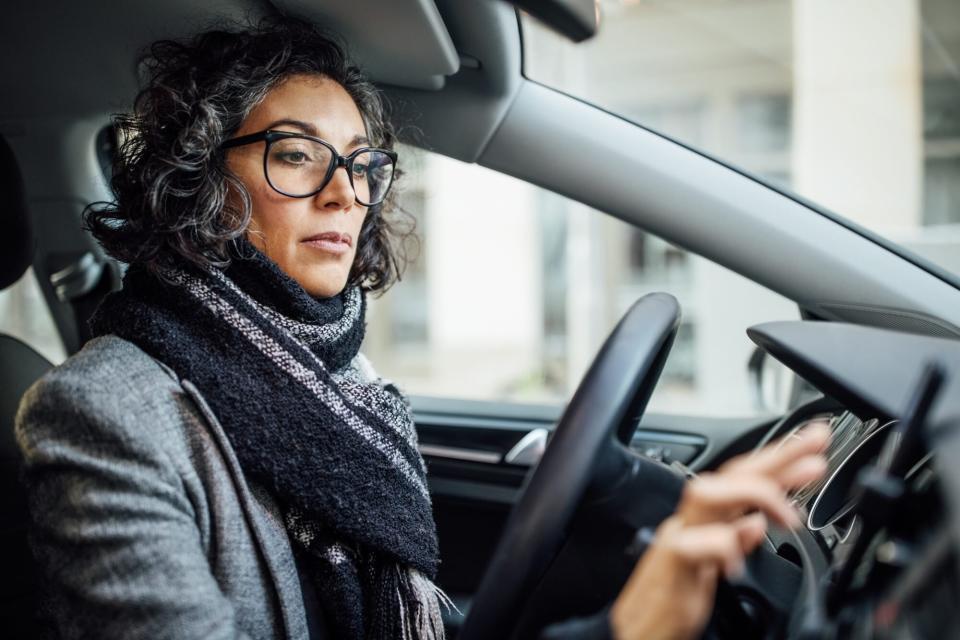How to Clean Your Car to Reduce the Risk of Exposure to COVID-19

We're all adjusting to life during the coronavirus pandemic, and part of that adjustment includes rethinking how we clean and sanitize our hands and our home. But what about the other areas of your daily life that also require extra care? Your car, for instance. You likely aren't driving as often, due to social distancing, which means disinfecting your car may be something you've overlooked. Still, the interior of your vehicle does require proper cleaning to help reduce your family's risk of exposure to COVID-19, especially if you're still using it to make essential trips to work, the grocery store, or the doctor. According to studies, 32% of Americans clean the inside of their cars just once per year—and 12% reported that they've never done so at all. The takeaway? Our cars are dirty—which means they could be a breeding ground for this virus.

Getty / Luis Alvarez
Think about it: You touch so many of your car's features every time you go for a drive—the door handles, steering wheel, gear shift, window and radio controls, seat adjuster, and cup holders. Giving these high-touch areas a thorough wipe down is critical for having a clean car and reducing the risk of infection. Ahead, experts share exactly how to do so.
Related: How to Prepare Your Home for a Pandemic, According to Experts
The steering wheel is the dirtiest part of your car.
Pay most attention to your steering wheel, since this is one spot where germs love to breed. Taylor Good, founder of the hand sanitizer company Handsy, says, "The number one collector of unwanted germs inside a car is the steering wheel, especially cars that are used in family settings or have multiple drivers. As cars get us places, this also means we end up in a myriad of environments—which also means that germs end up tracked inside our cars."
Use multi-purposes sprays or soap and water.
"You can use a disinfectant spray or wipes on most automobile surfaces," says Brian Sansoni, the Senior Vice President of Communications at the American Cleaning Institute, "but make sure you let the spray or wipe air dry as per product label directions, in order for an effective germ or virus kill to take place." What you don't want to do is wipe your steering wheel right before you go for a drive and then immediately grab it—that simply defeats the purpose.
If you're low on Lysol wipes, you can also use good old-fashioned soap and water. According to Sarah Paiji Yoo, co-founder and CEO of the eco-conscious cleaning brand Blueland, "The virus is very fragile, and the only thing that protects it is a thin outer layer of fat. As a result, any soap or detergent is the best remedy, because the foam cuts the fat."
Don't use harsh chemicals on upholstery.
What you definitely want to stay away from is bleach or hydrogen peroxide—formulas that can damage to a car's upholstery. Says Sansoni, "You should always check with the manufacturer instructions for cleaning your seats. They may recommend a specialty cleaner, depending on the type of fabric."
Touchscreen displays require special attention.
More delicate areas, like touchscreens, require extra care. "For any touchscreen displays, I'd recommend using a microfiber cloth dampened with an eyeglass cleaner or a cleansing wipe specifically for touchscreens," says Yoo.
Don't forget to vacuum.
In addition to cleaning your seats, consoles, and surface areas with a disinfectant, you also want to vacuum your car regularly. "Also consider using a fabric refresher or air sanitizer to keep the car smelling fresh," suggests Sansoni.
Practice care while in ride shares.
But what if you rely on ride sharing services like Uber or Lyft? Sansori suggests always traveling with your own sanitizing products. "Folks being picked up by ride sharing services can bring along a hand sanitizer or hand wipes if they're worried about touching too many surfaces," he says. Yoo also suggests opening the window and wearing a mask if possible. "And don't touch your face while in the car," she adds.

